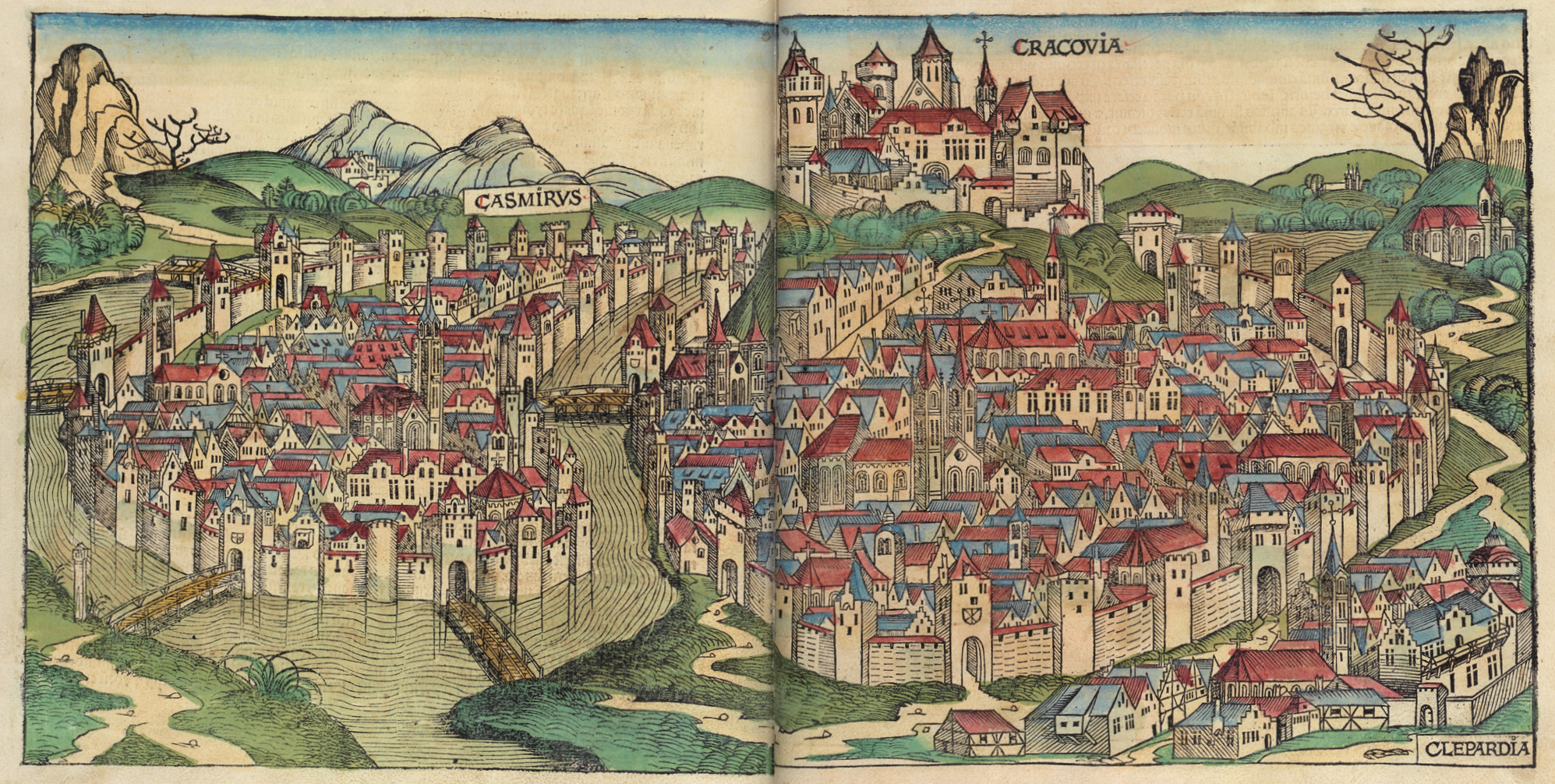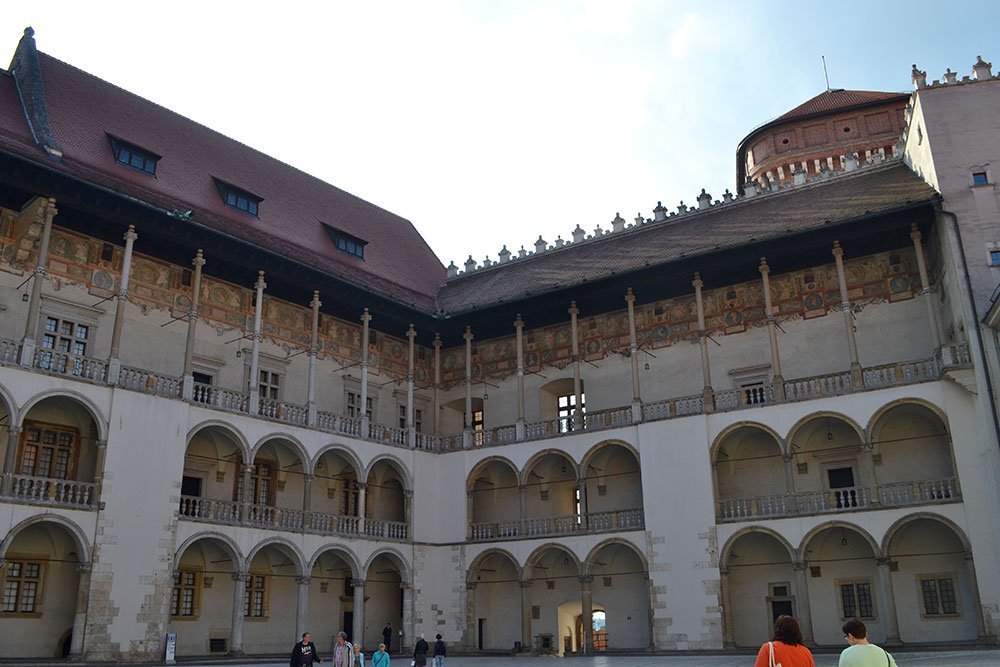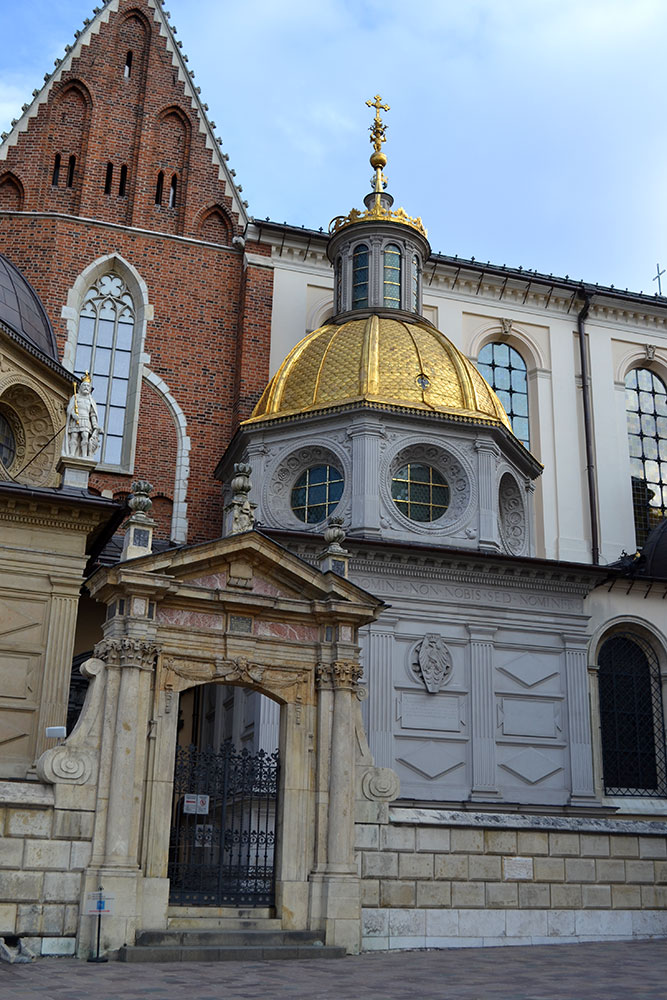Krakow
The Piaste dynasty granted Krakow, which was both the capital of the Kingdom of Poland and the dynasty’s, many political, commercial, and legal privileges. Under the Jagiellons, the city developed into a European metropolis, as well as an important cultural and university center. It was also where the Polish nobility gather and the Sejm were held.
In the Middle Ages the city was an important Central European trading center. Southern merchants sold copper from upper Hungary, while northern Hanseatic merchants traded herring and cloth from London. Spices and crafts from Nuremburg came to Krakow via the trading centers on the Black Sea.
Kasimir the Great, the last ruler of the Piaste dynasty, founded the Academy of Krakow in 1364. After the University of Prague, the Academy was the second university in central Europe. At the beginning of the fifteenth century, Vladislav II Jagiello honored the last will of Queen Hedwig von Anjou and re-founded the University, which until then had been named after the dynasty (Jagiellon University of Krakow). Under of the Jagiellons, the university blossomed. Outstanding professors, including law professors, mathematicians, and astronomers, taught countless students from many different countries, among them Nicolas Copernicus.
Both the thriving university and the royal court, which had family connections to a number of courts throughout Europe, attracted many foreigners to Krakow – humanists, printers, architects, and sculptors. Among them was Filippo Buonaccorsi (Callimachus), who taught the sons of Kasimir Jagiello and Elizabeth of Habsburg. They also included Conrad Caltis, the founder of Solidas Vistulan,a as well as Veit Stoß, who created the Altar of the Church of St. Mary for the citizens of Krakow; it depicts the Assumption of the Virgin Mary. He was also commissioned by the royal court to construct the tomb of Kasimir IV in the Wawel Cathedral.
At the beginning of the sixteenth century, King Sigismund the Old commissioned the Sigismund Chapel, a Renaissance jewel north of the Alps. The royal residence was also rebuilt in the style of the Italian Renaissance. The king’s patronage inspired many citizens, members of the clergy and Polish or Lithuanian noblemen, who rebuilt and embellished residences, churches, town halls, and drapery shops in the Renaissance style.
However, the integration of Masovia in 1526, increasingly close connections with Lithuania, and the eastward orientation of foreign politics moved the political center of the state to cities like Petrikau, Lublin, Warsaw, and Grodno. Under the rule of elected kings, who rose to power following the extinction of the Jagiellon dynasty, Krakow lost both its status as the foremost royal residence and its economic, cultural, and scientific importance.
Anna Ziemlewska



